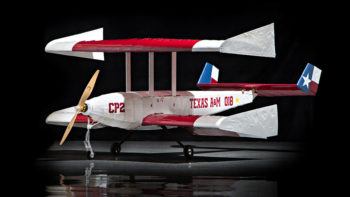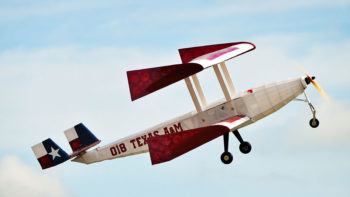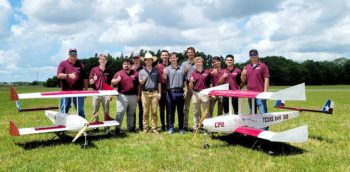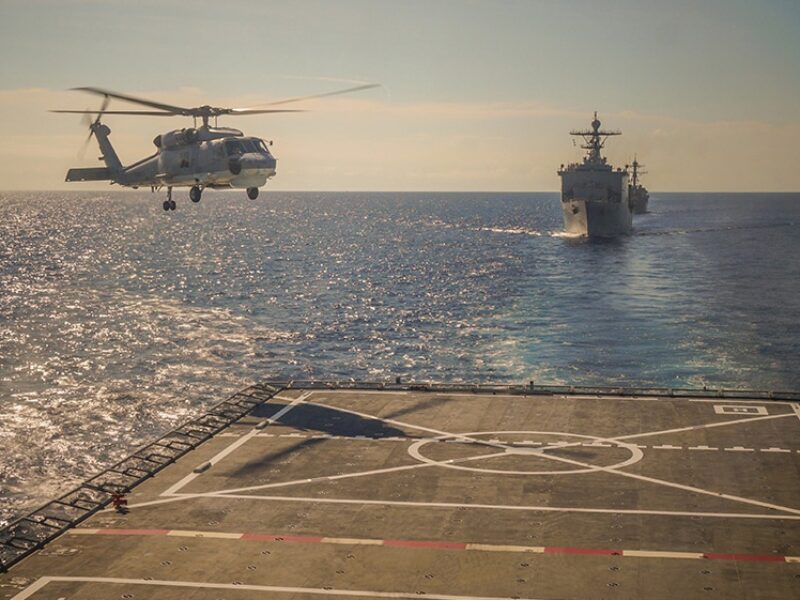World Champion: Texas A&M Wins International Aero Design Competition

Texas A&M University’s Society of Automotive Engineers (SAE) Aero Design team is the world champion of the 2021 SAE Aero Design competition. This marks the second year in a row the Department of Aerospace Engineering’s student-led organization took first place at the international competition.
SAE Aero Design exposes students to real-world engineering situations by challenging them to design, build and fly a radio-controlled (RC) airplane optimized to meet a specific set of configurations and mission requirements. The competition creates a hands-on opportunity for students to apply the tools of their trade while also developing project management and communication skills.
“It really mimics industry in that there are problems to be solved and there’s competition for that, different companies working to solve the same problems,” said Blake Rogers ’22, team member and student in the aerospace engineering department. “So in that way, I’ve gained a learning experience that translates, and it’s great preparation for engineering in the real world.”
This year, teams shared another universal challenge along with industry: working together during a period of physical distancing.

“I definitely think it was a challenge, especially when connecting with people and explaining concepts, but it was about realizing that it was going to be a different season and addressing the problems as we came to them,” said Kyle Curnutt ’21, team director and recent graduate from the J. Mike Walker ’66 Department of Mechanical Engineering.
To help navigate the unexpected challenges of working on a project remotely, the team leaned into its core values for motivation and direction.
“One of our core values is excellence, and another is initiative, so those two combined meant that we had a team committed to putting in the time it took to overcome virtual barriers, and over time, we learned to adapt,” said John Blausen ’21, team chief engineer and recent graduate from the mechanical engineering department.
Texas A&M’s team, Farmers Flight, worked together entirely over Zoom for the first few months, leveraging computer-aided design and simulations in the absence of a physical workspace and wind tunnels for testing. Despite the added learning curve, they stayed on track with their project.
“We ended up designing a whole prototype over the summer, and we designed it all over Zoom,” Rogers said. “It was kind of a risk designing a plane that early, but we saw it was beneficial as a learning process for new members on the team to go through a design from start to finish, and it gave us time to focus on improving the design and build process in the fall.”
With the support of advisors, Farmers Flight was able to safely begin building and testing their plane. The team’s advisors, associate professor of practice Brad Worsham and Scott McHarg, both from the aerospace engineering department, committed their weekends and hours after work to help the students test their design and learn from failed flights.
“It’s really unique and a benefit to our team that we have the support from our advisors for every single flight,” Curnutt said. “Scott McHarg has been flying RC planes for years, so he gives advice from a very practical perspective, and Brad Worsham can translate that using theory.”
This year, Farmers Flight veered from their previous year’s winning monoplane design and instead explored a biplane design. Opting for a new approach pushed the team, but it paid off. They surpassed their flight performance score from last year and performed well enough on day one of the competition to seal their win.
Farmers Flight placed first overall and in mission performance, second in technical presentation and third in technical design report in the Regular Class. They also received a sportsmanship award after sharing a discrepancy they found in their scores, which mistakenly gave them extra points. They were awarded a $100 gift card for their sportsmanship, and after discussing it as a team with their advisors, they chose to donate the gift card to another team to help them purchase new parts for their aircraft.
“It was an achievement to be there in itself, and I think the camaraderie among everyone there was different than in previous years,” Rogers said. “It was like we were just happy to see other people and have gone through the same struggles and been able to make it to the competition and fly.”

For the students, SAE Aero Design extends well beyond the competition. The experiences they have from the start of the project to the final flight impact their success both in and out of the classroom.
“It’s interesting to hear students talk about learning something in class and then applying it in designing the next week or vice versa,” Curnutt said. “I really think getting experience on an engineering team broadens your perspective as an engineer; it allows you to start applying concepts as you learn them.”
The personal and professional development that comes with participating in student organizations like SAE Aero Design is what motivates Worsham and McHarg to help create the opportunity for students.
“They always support us and push us as a team, and we’re just so appreciative to have these great guys who are proud to be our advisors and really help us improve as engineers,” Rogers said. “They have definitely contributed to the success we’ve had these past few years.”
The student leaders were able to extend the Aero Design experience to more students this year after seeing a highly competitive applicant pool. Because of the growing interest, a second team was created to compete in the Micro Class. They placed second in technical presentation and fifth in design report.
Learn more about Texas A&M’s SAE design team and the annual SAE Aero Design competition.
This article by Felysha Walker originally appeared on the College of Engineering website.




